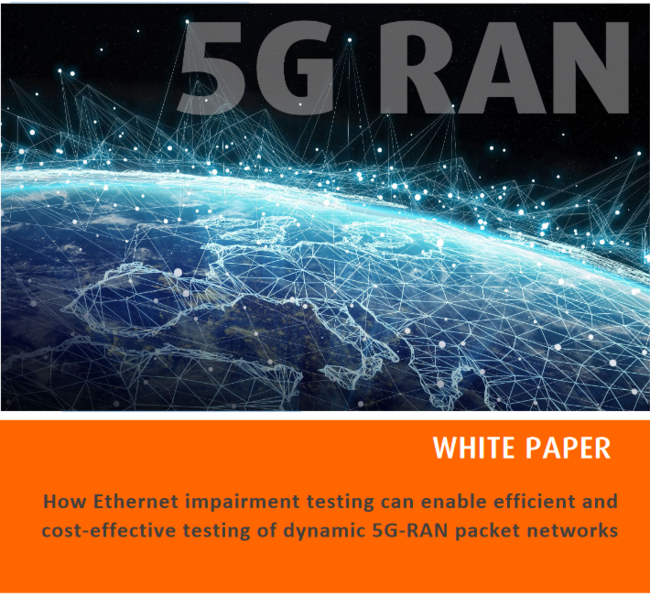
White Paper

Xena Networks: Plotting the performance landscape for 5G RAN Packet Networks
5G deployments are now underway across the globe but are merely the first steps in a multi-year journey for the mobile industry. Many practical challenges still remain, not least of which is the challenge of cost-effectively deploying 5G Radio Access Networks (RANs) at scale and assuring the performance of supported 5G services.
The 5G RAN architecture provides an open, virtual, packet-based network that extendsfrom the core to the radio antenna. The virtual architecture of 5G RAN with network slicing and new functional elements, such as the Central Unit (CU) and Distributed Unit (DU), enables multiple demanding services to share the same infrastructure without compromising on their specific performance requirements. Virtual, packet-based RANs also enable network sharing over open interfaces as well as multi-vendor implementations, both of which are important to the 5G business case.
Hardware appliances, such as the Remote Radio Head and Baseband Unit of 4G LTE are now replaced with virtual software running on whitebox or Commercial Off-The-Shelf (COTS) hardware. In 5G, the Baseband Unit is split into two new functions, namely the CU and DU. Both these functions can be located either close to the 5G core or close to the Radio Unit (RU) to meet latency and backhaul requirements. This leads to a much more dynamic fronthaul, midhaul and backhaul network, which is now collectively referred to as the 5G cross-haul or “X-haul” network.
It also means that the traditional aggregation architecture where higher capacity is required closer to the core is no longer the norm. As cloud computing and other real-time services move closer to the edge of the network, more traffic is likely to remain close to the subscriber requiring higher capacity X-haul networks with 10G, 25G and even 100G Ethernet connectivity.
The flexibility and dynamic nature of 5G RANs poses new challenges for mobile solution vendors, network operators and service providers. One of those challenges is assuring performance in a highly dynamic environment. Traditional functional, application, integration and protocol testing can be used to test whether 5G equipment is implemented properly and performs as expected. However, these tests are not designed to determine how resilient or robust the equipment will be in the face of network issues that are common in Ethernet networks. 5G RAN packet networks are dynamic with many network configuration possibilities that can change instantaneously. There is, therefore, an additional need to test the limits of network equipment performance under various conditions to ensure dynamic changes in the Ethernet packet network do not lead to service performance issues or outages.
In other words, there is a need to plot the “performance landscape” of the 5G RAN, contouring the performance limits of network equipment and software functions and the 5G RAN itself. Network emulation of the Ethernet-based 5G RAN packet network with impairment testing can be used to stress test network equipment and virtual software in various configurations. This enables vendors to assure performance of their network equipment and software before delivery to network operators. It also enables network operators and service providers to plot their 5G RAN performance landscape at a fraction of the current cost and time and with greater accuracy. This is because testing can now be performed in the lab where a broad variety of scenarios can be tested that are often difficult, if not impossible, to perform in the field.
Related Topics:
No Related Topics at this time.